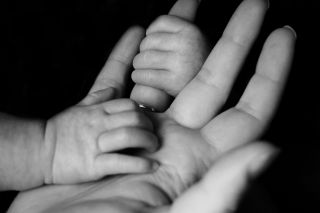Child Development
Mama: The Name That Started It All
The history behind "mama" tells us a lot about the mother-child bond.
Posted May 5, 2024 Reviewed by Abigail Fagan
Key points
- "Mama" is incredibly common across even unrelated languages.
- The syllable "ma" is one of the earliest babies are able to utter.
- Its association with a mother specifically is believed to relate to one of her primary roles.
As we honor our mothers, it’s easy to think about all the things mothers have done for us, but there is one pretty important thing that we offspring have done for them: Give her the name by which she’s known.
“Mama” is one of the earliest words that babies utter. Moreover, it is not unique to any one language, but one of the most universally shared words across languages. From French maman to Russian mama to Chinese mama, it’s fairly hard to find babies calling a mother by any other name. So, what gives?
A brief maternal history
When we consider the first sounds that babies babble, it typically involves one of three vowel sounds, “ee,” “ah” or “euw,” and consonants like p, b, d, t, k, g, n, or m. These sounds have been found to be among those babbled earliest regardless of which language a baby will end up speaking, which is related to the articulatory and perceptual characteristics of these sounds.
That means, when babies start playing around with putting speech sounds together into rudimentary syllables, they draw from those vowels and consonants, giving us cute baby mutterings like “dada,” “papa,” “nana,” or “mama.” Of course, little Elvia has no idea what she is saying, or that words are even a thing yet, but mom and dad are certainly cued into making these mutterings into something meaningful, i.e., names for themselves.
As a result, the similarity in baby words for mothers and fathers across languages can be understood as what naturally happens when baby babbles meet the ears of eager parents. Since all babies are pretty constrained in terms of the early sounds they are able to say, we get the same recurrent patterns, namely, “dadas,” “babas” and “papas” or “mamas” and “nanas,” that come to be heard as parental monikers.
Why dada first?
In what might be the ultimate insult to all exhausted-from-lack-of-sleep mothers everywhere, babies have a habit of uttering “dada” (or papa or baba) before “mama.” Considering mothers still do the lion’s share of work related to infant care in most cultures, this father-first inclination certainly runs counter to what we might expect. But moms can rest assured, it’s all about the sounds, not you.
While sounds like “d,” “t,” “p” and “b” are all oral sounds, “m” is what is referred to as a nasal sound, meaning air flows through the nose. Though all appear early in baby babble, oral sounds are babbled more often than nasal sounds, so it is likely that the “dada” bent of young babies is simply the result of this greater frequency, not greater fondness.
Mommas are mammals too
The bigger question is why there is such ubiquity across languages in linking “dada,” “papa” or “tata” with fathers while mothers are almost always “mama.” After all, if moms are around more and “dada” is uttered earlier, why are more moms not called “dada” in languages around the world?
A number of scholars have suggested that the answer lies in the roles that mothers play as the primary nourisher as well as primary nurturer. In other words, mothers are the ones who breastfeed, and the sounds babies tend to make when suckling at the breast are along the lines of “mmmm,” not “dddddd.”

As a result, these nasal sounds have more of a tendency to become associated with mothers’ roles rather than fathers’, giving rise to the prevalence of “mama” for the female parent in even unrelated languages. The idea here being that babies make “mmm” sounds when hungry or needing comfort, which mom recognizes as her call sign and responds. The association of “m” sounds with the breast is also carried over into the words mammal and mammary, both of which pertain to a female’s production of milk.
Dearest mother
But if we start out with a “mama,” how do we end up with the more grown up version “mother?”
Mother is simply “mama” with a bit more polish added on, mainly by way of the attaching of a kinship suffix -ter to the “ma” that was already around, i.e., Latin “mater” or Sanskrit “matar,” both older languages descended from the same original source language as English.
Sure, English “mother” has undergone a sound change or two in the intervening centuries since it was “modor” in Old English, but you can still find the “ma” in a mother every time she gives a hug, no matter how grown up you are.
References
Jakobson, R. (1962). Why 'mama' and 'papa'? In Roman Jakobson: selected writings vol. I.Phonology. The Hague: Mouton.
Bancel, P.J., & Matthey de l’Etang, A. (2005). Kin tongue. A study of kin nursery terms in relation to language acquisition, with a historical and evolutionary perspective. Mother Tongue, 9, 171–190
MacNeilage, P.F. (2008). The origin of speech. Oxford, UK: Oxford University Press.




